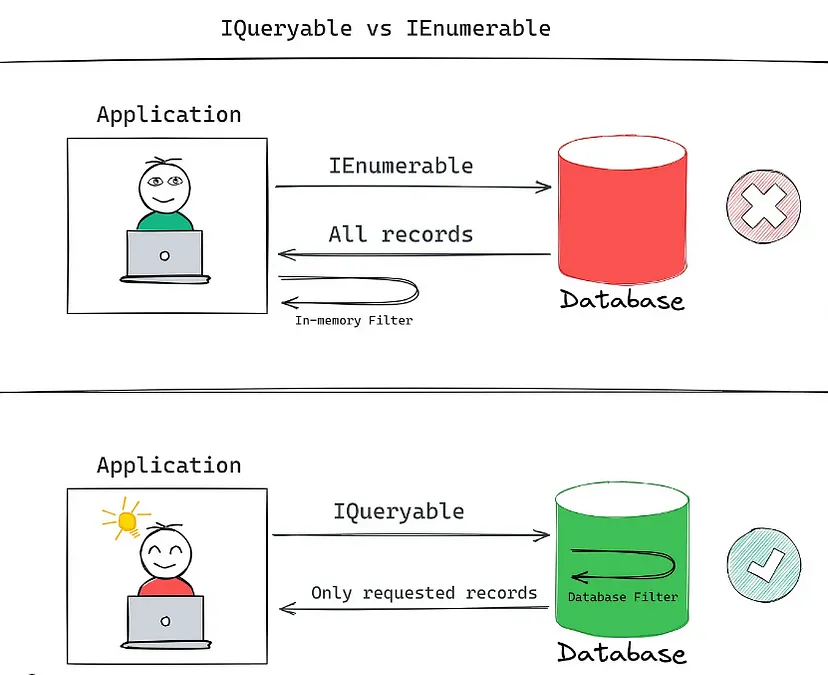Unraveling the Differences Between IEnumerable and IQueryable in C# ⚙️💻🔄
 |
| Differences Between IEnumerable and IQueryable |
Introduction
In the intricate landscape of C# programming, understanding the disparities between IEnumerable and IQueryable is pivotal. Whether you're crafting database queries or manipulating in-memory collections, this guide will illuminate the distinctions, offering insights into when to use each interface. Let's embark on a journey through the nuances of data manipulation! ⚙️💻🔄
Understanding IEnumerable
IEnumerable is the bedrock interface for collections in C#. It represents a forward-only cursor of data, suitable for in-memory collections like arrays, lists, and other enumerable types.
IEnumerable<string> countries = new List<string> { "USA", "Canada", "India" };
foreach (var country in countries)
{
Console.WriteLine(country);
}Key Characteristics of IEnumerable:
- Suitable for querying in-memory collections.
- Executes queries locally in memory.
- Ideal for small to medium-sized datasets.
Diving into IQueryable
IQueryable is an interface tailored for querying data from a database. It extends IEnumerable but introduces deferred execution, enabling the generation of more efficient queries against a data source.
IQueryable<string> countries = dbContext.Countries;
var selectedCountries = countries.Where(c => c.Population > 100000000);
Key Characteristics of IQueryable:
- Suitable for querying databases.
- Supports deferred execution, allowing the creation of more optimized queries.
- Ideal for large datasets, where executing queries in the database is more efficient.
Performance Considerations
IEnumerable executes queries locally, bringing the entire dataset into memory before filtering, sorting, or projecting. In contrast, IQueryable translates operations into a format that the underlying data source understands, allowing for more efficient execution.
When to Choose Each Interface
Use IEnumerable When:
- Dealing with in-memory collections.
- Performing operations on small to medium-sized datasets.
Use IQueryable When:
- Querying a database or any external data source.
- Working with large datasets where optimizing query execution is crucial.
Practical Example:
Consider a scenario where you have a database of customers, and you want to filter customers based on their purchase history.
// Using IQueryable
var loyalCustomers = dbContext.Customers.Where(c => c.TotalPurchases > 1000);
// Using IEnumerable
var allCustomers = dbContext.Customers.ToList();
var loyalCustomers = allCustomers.Where(c => c.TotalPurchases > 1000);Conclusion
Understanding the disparities between IEnumerable and IQueryable is fundamental for efficient data manipulation in C#. Whether you're working with in-memory collections or querying databases, choosing the right interface can significantly impact performance.
Happy coding! ⚙️💻🔄
